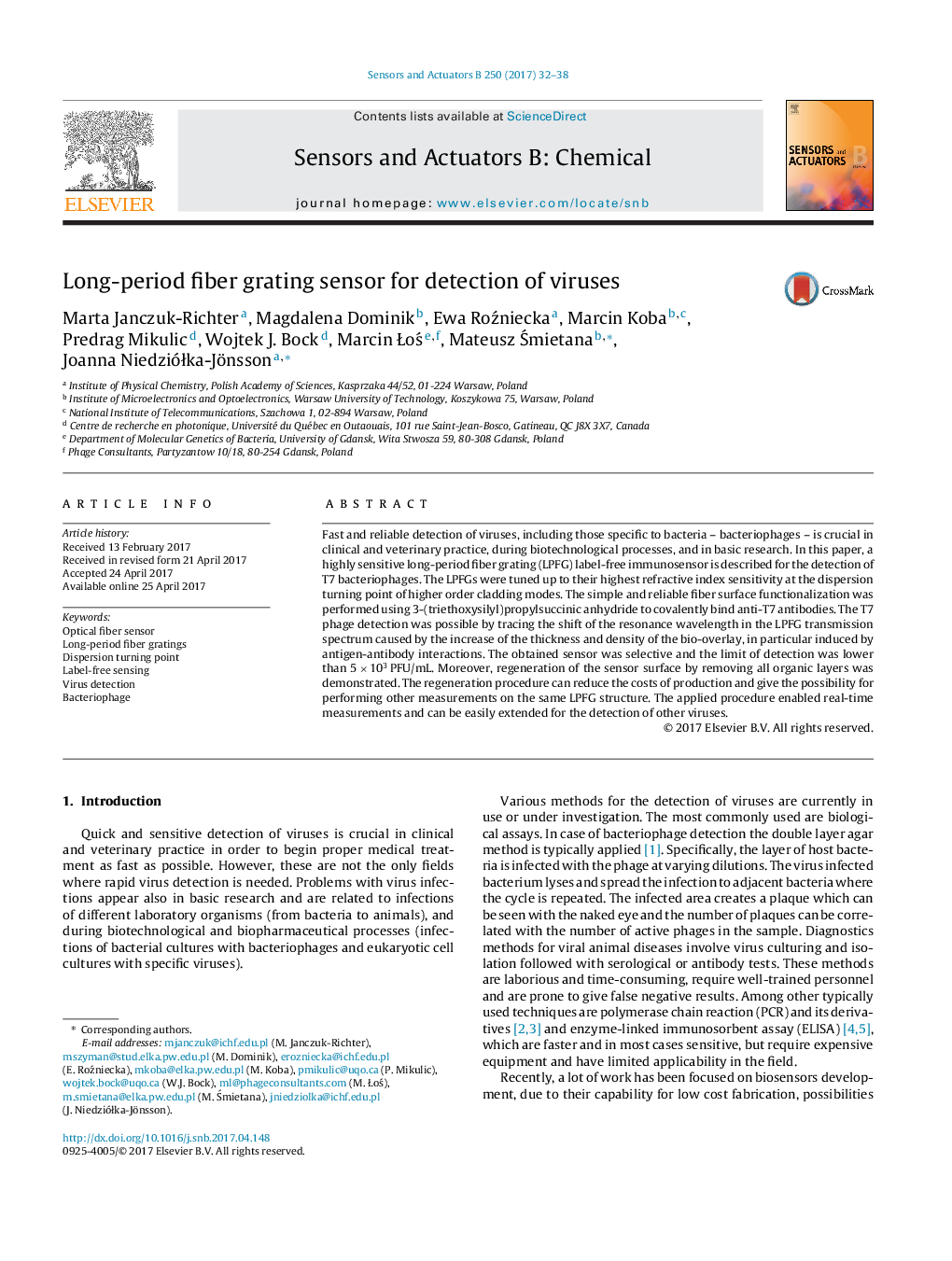| Article ID | Journal | Published Year | Pages | File Type |
|---|---|---|---|---|
| 5008750 | Sensors and Actuators B: Chemical | 2017 | 7 Pages |
â¢The first biosensor based on long-period fiber grating (LPFG) for virus, i.e., bacteriophage, detection was developed.â¢The LPFGs were tuned up to their highest refractive index sensitivity and modified with antibodies.â¢Bacteriophages (T7) were detected at concentration below 5 Ã 103 PFU/mL in a short assay.â¢The sensor is label-free, enables real-time measurements, and can be regenerated.
Fast and reliable detection of viruses, including those specific to bacteria - bacteriophages - is crucial in clinical and veterinary practice, during biotechnological processes, and in basic research. In this paper, a highly sensitive long-period fiber grating (LPFG) label-free immunosensor is described for the detection of T7 bacteriophages. The LPFGs were tuned up to their highest refractive index sensitivity at the dispersion turning point of higher order cladding modes. The simple and reliable fiber surface functionalization was performed using 3-(triethoxysilyl)propylsuccinic anhydride to covalently bind anti-T7 antibodies. The T7 phage detection was possible by tracing the shift of the resonance wavelength in the LPFG transmission spectrum caused by the increase of the thickness and density of the bio-overlay, in particular induced by antigen-antibody interactions. The obtained sensor was selective and the limit of detection was lower than 5Â ÃÂ 103Â PFU/mL. Moreover, regeneration of the sensor surface by removing all organic layers was demonstrated. The regeneration procedure can reduce the costs of production and give the possibility for performing other measurements on the same LPFG structure. The applied procedure enabled real-time measurements and can be easily extended for the detection of other viruses.
Graphical abstractDownload high-res image (169KB)Download full-size image
